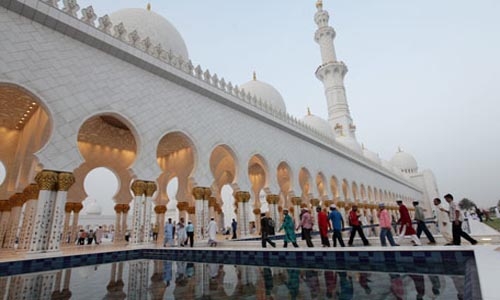Astronomer shares forecast for first day of Eid in UAE
Dubai: The beginning of Eid Al Fitr this year will most likely fall just a couple of days before the weekend in July, giving workers in the UAE at least a four-day break, according to calculations made by a UAE-based astronomer.
Rohan Roberts, lead astronomer for the SciFest Dubai Astronomy Group, predicted that Eid will probably start on July 6th, Wednesday.
“We know that the moon will definitely not be visible on Monday, 4th July. But on Tuesday, 5th July, a one per cent waxing crescent moon will be visible after sunset. So, in all likelihood, the first day of Eid should be Wednesday, 6th July,” Roberts told Gulf News.
The official dates for the Eid holidays in the UAE, which start right after the last day of Ramadan, are still up in the air. Traditionally, people wait for a committee to spot the new crescent moon with the naked eye for the holidays to be declared.
Some countries, however, have already agreed on the Eid Al Fitr dates. Turkey has recently announced that the country will celebrate Eid for nine days, from Saturday, July 2 until Sunday, July 10, but the official holiday will be from July 5 to July 7.
For those in the UAE who want to have an idea or plan in advance, there are modern and high-tech ways to predict when the end of Ramadan will be. Roberts said these options could show accurate predictions.
“There are numerous apps related to astronomy and Ramadan on the Android and iOS app stores. The motions of the heavenly bodies are very accurately predictable using these apps. They are programmed using the most precise mathematical calculations and are based on cutting edge science,” explained Roberts.
“As an astronomer, my personal favourite app is StarWalk. But there are numerous others. The algorithms these apps are based on can predict the motion of the moon, stars and planets for years, decades, and even centuries into the future.”
Modern moon-sighting alternatives might be more accurate than the traditional one, given that dust, humidity and light pollution can hamper a clear view of the night sky.
“If there is cloud cover, that's an additional cause for concern. Sometimes even altitude can have an impact on how effective naked-eye sighting of the moon can be.”
However, some countries like Indonesia employ the assistance of telescopes to sight the moon. “If the moon is just one per cent visible, it can be hard to spot with the naked eye,” said Roberts.
Related Posts

